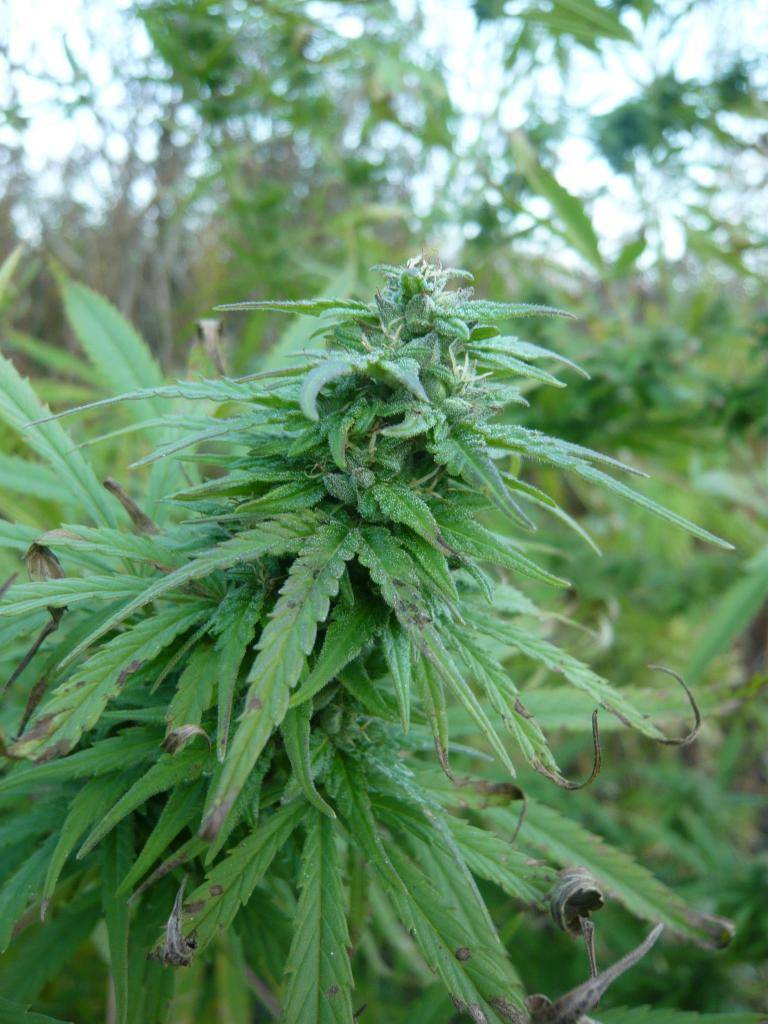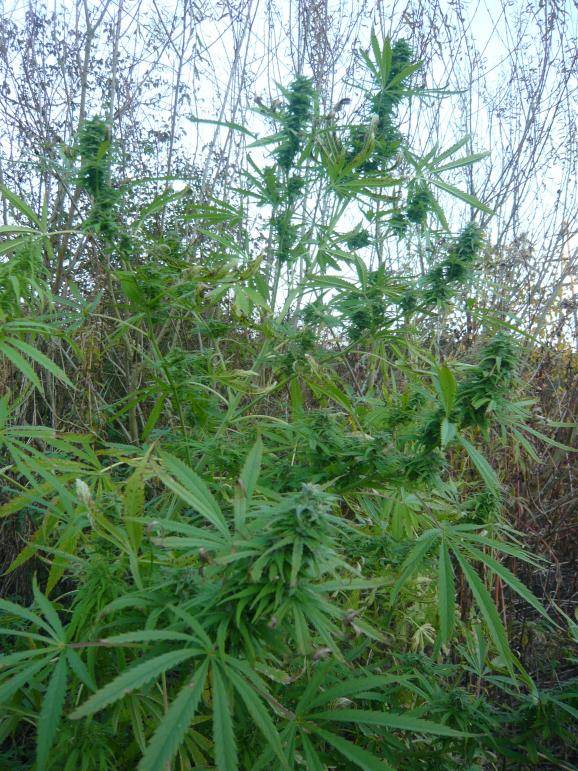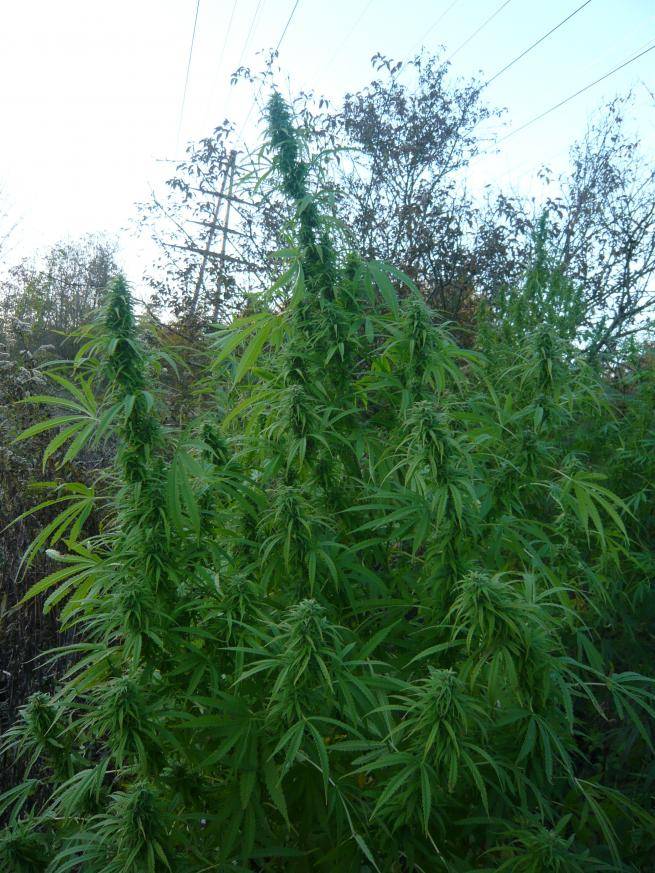-
ICMag with help from Landrace Warden and The Vault is running a NEW contest in November! You can check it here. Prizes are seeds & forum premium access. Come join in!
You are using an out of date browser. It may not display this or other websites correctly.
You should upgrade or use an alternative browser.
You should upgrade or use an alternative browser.
Extinction by Hybridization: The Cannabis Biodiversity Crisis
- Thread starter ngakpa
- Start date
this is the second podcast, heavily edited
for USD 3 you get the whole podcast plus everyting else Curious About Cannabis has to offer
Sunshineinabag
Active member
Well I appreciate you pointing that out...editing like that annoys me....let me see if I can get it orig unedited
romanoweed
Well-known member
I show you what i mean with Selection causes loss of the Edge, of spirituality.
I grew Snowhighs Vietblack side by side to Ultralowgeneration Vietblack. Same Line.
Look at it , i ssuspect selection makes things bit soft, loosing the Edge. Not only the inbreeding depression might endanger the selections aswell. But the effect i think gets worse IN SOME ASPECTS and very importent aspects even.
Shall the Pictures show you how that loss possibly looks.
Snowhigh Vietblack:


Ultralowgen Vietblack:

I grew Snowhighs Vietblack side by side to Ultralowgeneration Vietblack. Same Line.
Look at it , i ssuspect selection makes things bit soft, loosing the Edge. Not only the inbreeding depression might endanger the selections aswell. But the effect i think gets worse IN SOME ASPECTS and very importent aspects even.
Shall the Pictures show you how that loss possibly looks.
Snowhigh Vietblack:
Ultralowgen Vietblack:
That's a pretty plant, but it isnt a good example of the start of a new landrace - because it is the result of 1:1 pollination (dont mean to be snarky - I may have misunderstood what you are saying!). It has the narrowest genetic roots. In a big enough open pollinated population (ideally working with at least hundreds of plants), natural mutation will ensure that diversity increases over time, whilst plants continue to adapt to local conditions, and valued characteristics are preserved by culling off-types. Point being it needs a broad genetic base to remain both healthy and sufficiently true to type to be recognisable as the same variety over time.
You're spot on about the importance of working with varieties over many generations. And for a variety to be sustainable it needs enough genetic breadth to keep it healthy. That's not going to work with a variety that is repeatedly put through single parent bottlenecks, especially if repeatedly backcrossed.
I'm also in favour of developing lines that are kept separate from the mainstream genetic pools - and starting from landraces is clearly the way to go (rather than crossing and recrossing the latest cookie clone). Even small scale cupboard growers can contribute positively to this by ensuring that when they grow landraces or old heirloom varieties, they do open pollinations of those lines first to back up the genetics in seed form rather than just hybridizing and losing the original. And growing multiple inbred lines from a landrace still leaves the possibility that those lines could at some stage be recombined.
Agreed. The post was over-simplified just for the sake of inspiration. I don't think people would read the novel it would take to explain how to start a new landrace.
romanoweed
Well-known member
i would, it love it.
aliceklar
Well-known member
i would, it love it.
Heh, me too! Maybe it needs its own thread though, and I should bow out of this one, as its a different topic.

romanoweed
Well-known member
Started, yes. its stll bit unknow if thee is a definite minmal poplationsize that can remain healthy for infinite future.
However, to assure a Race will live forever, 2000 plants per gen are needed.
And more importandly, acording my believe, it is close to impossible to reverse the damage done by bottlenecking regarding smokeeffects..
Ok, it actually is possible, but with unlikely higher efforts, than just dong it save in the first place. (snowhighs viet will never gain back lost traits, but lowgen easily selectable to a snowhighs viet)
So, a landrace can be started with one plant.. but possibly not a as good one as a 2000 plant landrace.
However, to assure a Race will live forever, 2000 plants per gen are needed.
And more importandly, acording my believe, it is close to impossible to reverse the damage done by bottlenecking regarding smokeeffects..
Ok, it actually is possible, but with unlikely higher efforts, than just dong it save in the first place. (snowhighs viet will never gain back lost traits, but lowgen easily selectable to a snowhighs viet)
So, a landrace can be started with one plant.. but possibly not a as good one as a 2000 plant landrace.
romanoweed
Well-known member
I wanna clarify: with one plant, and from then on 2000 Plants each generation its possible. Closer said, if the one plant was 8 generations homogenized thowards wrong unhealthy generations before , it can show even in the 2000plant further generations some damaging dynamics, and therefore its not save to say the landrace would persist, in the 2000plantations .. The dynamics may finally kill the Line then.
I am no expert, but these are what i think i learned. So, im not claiming it
I am no expert, but these are what i think i learned. So, im not claiming it
@romanoweed, only way to find out is to try it out!
From 3 original punto rojo seeds, I've found, early, middle, late flowering phenos, purple phenos, low odor, spicy odor, fruity odor, dense buds, long, foxtail buds, moderately potent to potent phenos...just a surprising amount of diversity from only 3 "founder" plants! These individuals probably came from a large, genetically diverse population. I have crossed them all with a few select punto rojo males from the same original founder plants with the hopes of maintaining diversity, but I don't think this population will last long term without introducing new genetics to it.
2 generations removed from the original 3 founder plants, I've seen a high frequency of runts and mutants. Even with selective pressure and growing out a few hundred seeds per generation, it's hard to say how long this population can be sustained. I've since infused some malawi gold into the line, while also maintaining the line pure. Both strains (punto rojo and malawi gold) reportedly originated from Africa, so they're similar yet genetically different. In case the pure punto rojo line gets overly mutated, I'll start working with the F1 hybrid, which by the way, smells way more incredible than either of the original parents!
Given that most of us can't grow out an acre of plants per generation, the only way I can think of growing small numbers of landraces while maintaining the populations without running into inbreeding depression is to introduce new but similar genetics to the line, infrequently. It will change the strain slightly (or drastically, depending on how different the new genetics are), but with the right selective pressure, those changes will improve the line! It's my belief that Cannabis is programmed to evolve, not stay static, inbred, or unchanged over time.
From 3 original punto rojo seeds, I've found, early, middle, late flowering phenos, purple phenos, low odor, spicy odor, fruity odor, dense buds, long, foxtail buds, moderately potent to potent phenos...just a surprising amount of diversity from only 3 "founder" plants! These individuals probably came from a large, genetically diverse population. I have crossed them all with a few select punto rojo males from the same original founder plants with the hopes of maintaining diversity, but I don't think this population will last long term without introducing new genetics to it.
2 generations removed from the original 3 founder plants, I've seen a high frequency of runts and mutants. Even with selective pressure and growing out a few hundred seeds per generation, it's hard to say how long this population can be sustained. I've since infused some malawi gold into the line, while also maintaining the line pure. Both strains (punto rojo and malawi gold) reportedly originated from Africa, so they're similar yet genetically different. In case the pure punto rojo line gets overly mutated, I'll start working with the F1 hybrid, which by the way, smells way more incredible than either of the original parents!
Given that most of us can't grow out an acre of plants per generation, the only way I can think of growing small numbers of landraces while maintaining the populations without running into inbreeding depression is to introduce new but similar genetics to the line, infrequently. It will change the strain slightly (or drastically, depending on how different the new genetics are), but with the right selective pressure, those changes will improve the line! It's my belief that Cannabis is programmed to evolve, not stay static, inbred, or unchanged over time.


